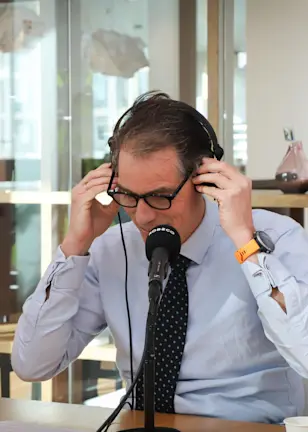This is a risky gamble which potentially gives Le Pen’s right-wing party a route to government. To date, the subsequent volatility has been felt most acutely in French bank and sovereign bonds. The market’s key concern appears to center not on ‘Frexit’ but rather the prospect of fiscal largesse, exacerbating already stretched sovereign credit metrics.
At the time of writing, we cannot know the ultimate outcome of the elections, however this episode serves as a timely reminder of the potential for meaningful volatility arising from unexpected events. Clearly, this is felt more acutely when valuations are high and consensus leans heavily in the same direction.
We target a more neutral positioning in investment grade and emerging markets, focusing on generating alpha through issuer selection. Within high yield we remain committed to our quality bias, resulting in a beta below the benchmark. (See the Outlook from the Global Macro team.)
Fundamentals
Economic data in the US has continued to paint a picture of a resilient economy. Indeed, most commentators have abandoned the view that the economy must ultimately break or fall off a cliff owing to the sharpest hiking cycle in recent years. A ‘Goldilocks’ scenario of softer growth, cooling inflation and the prospect of imminent rate cuts remains the broad market consensus. If realized, this should provide a solid fundamental tailwind to fixed income investing, both in rates and credit.
In Europe, the debate is more nuanced. Earlier this month, the first interest rate cut was duly delivered although European Central Bank President Lagarde stressed future moves would be data dependent. While growth expectations have improved throughout the year and consumer confidence has visibly increased, the recent political (and ongoing geopolitical) turmoil makes the future somewhat harder to predict.
“
Corporate fundamentals appear solid overall
Corporate fundamentals appear solid overall. Within investment grade, the aggressive terming out of debt maturities at very low yields post Covid has clearly insulated many borrowers from rising interest rates. Leverage in both the investment grade and high yield markets has ticked up a little from recent lows but hardly appears a major cause for concern. Likewise, interest cover ratios have declined but reside at healthy levels. In aggregate, margins and liquidity stay robust. Default rates within high yield have picked up in recent quarters but remain at relatively low levels. Maturity walls in high yield, at least for the remainder of this year and the next, appear manageable. While a higher cost of debt could prove painful for some, it may also provide a strong incentive to deleverage.
信貸投資的新動態
訂閱我們的電子報,緊跟最新的信貸投資趨勢。
Valuations
As credit investors, our primary metric for assessing value in the market is to look at spreads. By examining 20 years of history we can see that US investment grade spreads currently look very skinny. This is particularly true of industrials, which currently sit at around the 4th percentile of historical observations. The Euro market doesn’t appear quite so rich by comparison, with spreads at or around the 50th percentile over the same period. In both cases, financials would seemingly offer superior relative value against non-financials.
There is a similar picture in high yield. The US market appears expensive in comparison to the EUR market, although, at around the 23rd percentile, it is hard to see compelling value in the EUR market in isolation. The notable exception here is the CCC-rated bucket where the more distressed cohort resides. We often refer to much of this as ‘phantom yield/spread’ as it is unlikely to be realized.
Technicals
In the final quarter of 2023, credit appeared to cheer the prospect of significant policy rate cuts over the course of 2024 and beyond, alleviating contemporaneous fears of recession. Yet the defining feature of 2024 thus far has been the unwinding of these expectations, both in regard to the timing and magnitude of policy loosening.
“
So why does demand for credit continue to be so strong?
It may therefore seem somewhat counterintuitive that credit spreads have continued to tighten as the probability of ‘higher for longer’ interest rates has increased. So why does demand for credit continue to be so strong, at even tighter spreads levels and facing a glut of supply?
The answer, we believe, lies in the ‘all-in yield’, with spreads potentially of secondary importance for many investors.
As described in greater detail already, suffice it to say that credit spreads appear far from cheap at current levels. Yet, when viewed through the lens of ‘all-in yields’ a different picture emerges. Looking back over the past decade, yields across most global credit cohorts currently sit in the 80+% percentile of historical observations.
While we must seek to understand and respect the technicals at all times, experience also tells us that they can change very quickly. An unbalanced supply and demand picture can cause spreads to trade far richer, or cheaper, than fundamentals might otherwise imply, and this can persist for long periods of time.
Important information
The contents of this document have not been reviewed by the Securities and Futures Commission ("SFC") in Hong Kong. If you are in any doubt about any of the contents of this document, you should obtain independent professional advice. This document has been distributed by Robeco Hong Kong Limited (‘Robeco’). Robeco is regulated by the SFC in Hong Kong. This document has been prepared on a confidential basis solely for the recipient and is for information purposes only. Any reproduction or distribution of this documentation, in whole or in part, or the disclosure of its contents, without the prior written consent of Robeco, is prohibited. By accepting this documentation, the recipient agrees to the foregoing This document is intended to provide the reader with information on Robeco’s specific capabilities, but does not constitute a recommendation to buy or sell certain securities or investment products. Investment decisions should only be based on the relevant prospectus and on thorough financial, fiscal and legal advice. Please refer to the relevant offering documents for details including the risk factors before making any investment decisions. The contents of this document are based upon sources of information believed to be reliable. This document is not intended for distribution to or use by any person or entity in any jurisdiction or country where such distribution or use would be contrary to local law or regulation. Investment Involves risks. Historical returns are provided for illustrative purposes only and do not necessarily reflect Robeco’s expectations for the future. The value of your investments may fluctuate. Past performance is no indication of current or future performance.




















